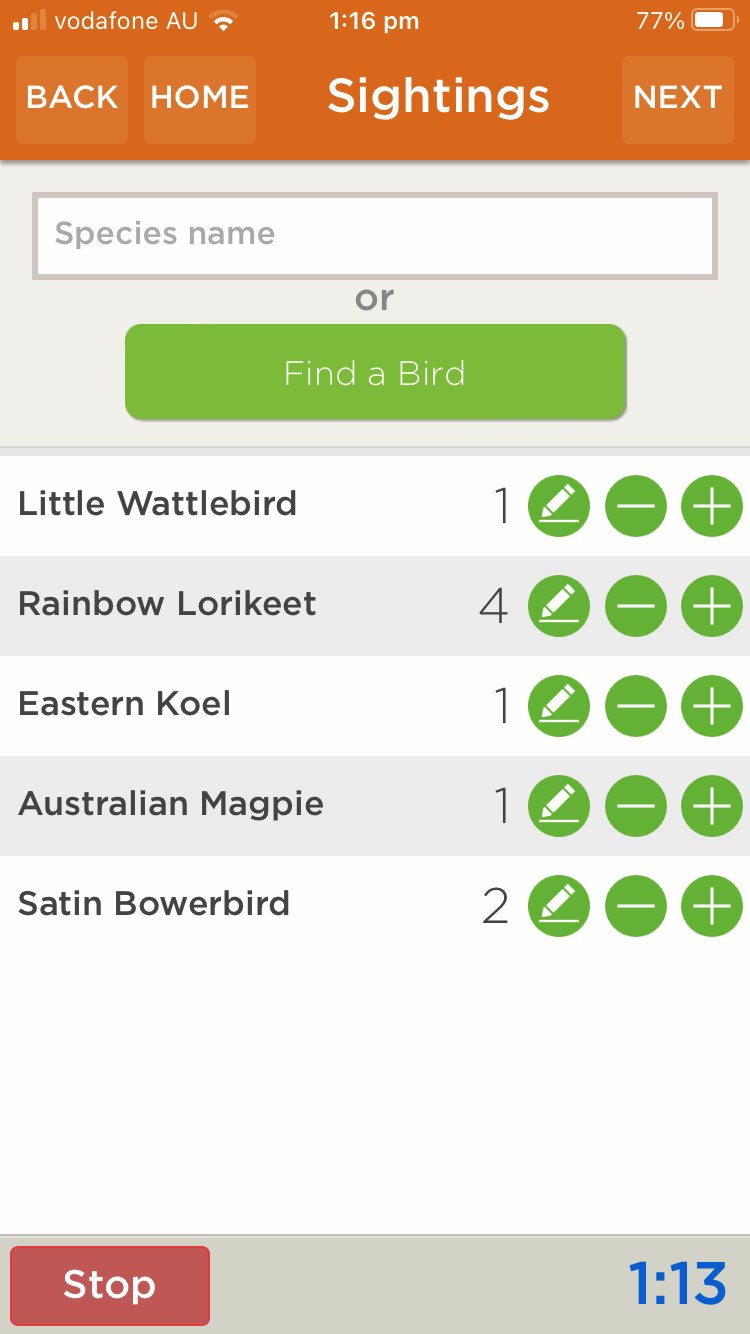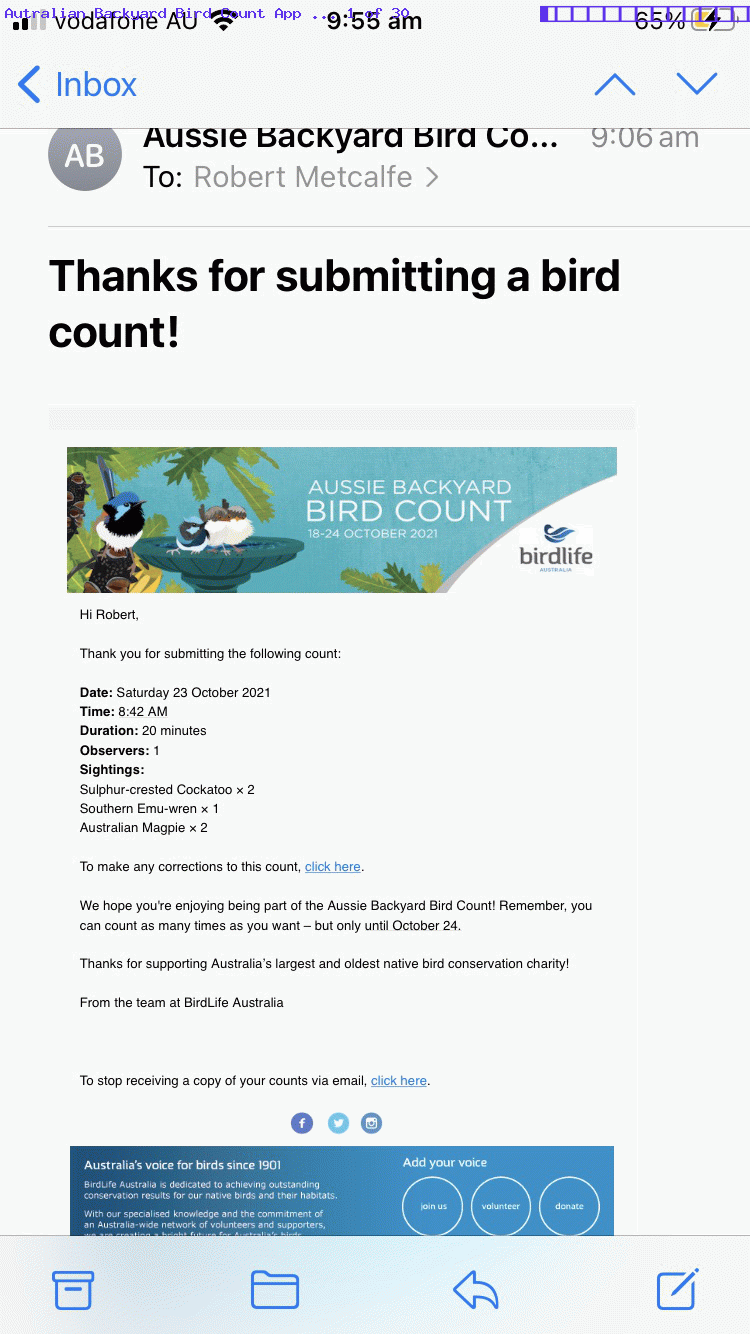Here, in Australia, you’ve just got today left to enter into the yearly Australian Bird Count for 2022, following up on last year’s Citizen Science Primer Tutorial introduction, for us.
We’re still novices, but for what it’s worth, trying to improve your Citizen Sciencery for bird counting in the Aussie Backyard Bird Count …
- it helps to do the twenty minutes of bird counting on a mobile phone with mobile data in the Aussie Backyard Bird Count app
- it helps to know some bird calls off by heart
- it helps to have predicted some birds you might find using the great Aussie Backyard Bird Count “Find a Bird” guide relevant to where you are located
- it helps to have binoculars at the ready over your twenty minutes of bird counting
- it helps to have more than one person looking (but repeat sightings on the one bird skew results)
- it helps to be still and quiet (including regarding pets)
- it helps to look up and down and way up (flying birds count)
- it helps to know that you can ignore the phone screen, noting down elsewhere on paper, perhaps, knowing that as the twenty minutes is up, the app waits for any bird listing before a Next button tap to submit your findings
Want some inspiration, here?! We got a kick out of interviews with Gisela Kaplan by Cassie McCullagh and a conversation with Sarah Kanowski and Richard Fidler of ABC 702 Radio Sydney.
Previous relevant Citizen Science Primer Tutorial is shown below.
Cannot remember having ever participated in any Citizen Science projects ever since the advent of mobile apps, though there was that time I filled in a New South Wales Museum contact us form to discover that we had a rubber snake next to the petunias, that time. So, today, here goes with the first!
We were made aware (via radio and television) of a Citizen Science project, aptly during “National Bird Week” called Aussie Backyard Bird Count, and got the “20 minutes at a time” counting the birdlife species in your backyard, as rules that might go okay with a half decent app. Well, the app is above “half decent” we think, though “fully decent”, how could you, yet?! It’s in the realms that one day we hold an app up to the skies and it works out the numbers for us, based on audio and visuals, perhaps, and, who knows, smellorama on bird droppings?!
As a programmer interested in “the coffee first thing in the morning before you knew you needed it” project, am I the best person to spruik human endeavour before automation? Well, there’s one thing thinking the lazy the brilliant ideas, and another following through … think “still lifes” around the place, and ropes awaiting action in painting places, and you might get the gist?!
No, the hard work of scientists, and their rigour is greatly admired hereabouts. But they can’t be everywhere in that empirical way Archimedes demonstrated to the science woooooorrrrrrlllllldddd. Yes, the intractability of so many of the wooooorrrrllllddd’s problems are coalescing on well conducted “Citizen Science” becoming more important. How else can the environment be monitored, with the often times dwindling resources given to science?
So, bird count it is, so far, for us. We record our registration and install and first 20 minute bird monitoring session to show you how a “Novice” (not our words, but the app’s) might tackle their first “Citizen Science” forall-acquaintance-be-forgotay. Would recommend the binoculars next time, and pick a central spot, and be still. Maybe you can combine the skills with your mindfulness app skills!
If this was interesting you may be interested in this too.
If this was interesting you may be interested in this too.




